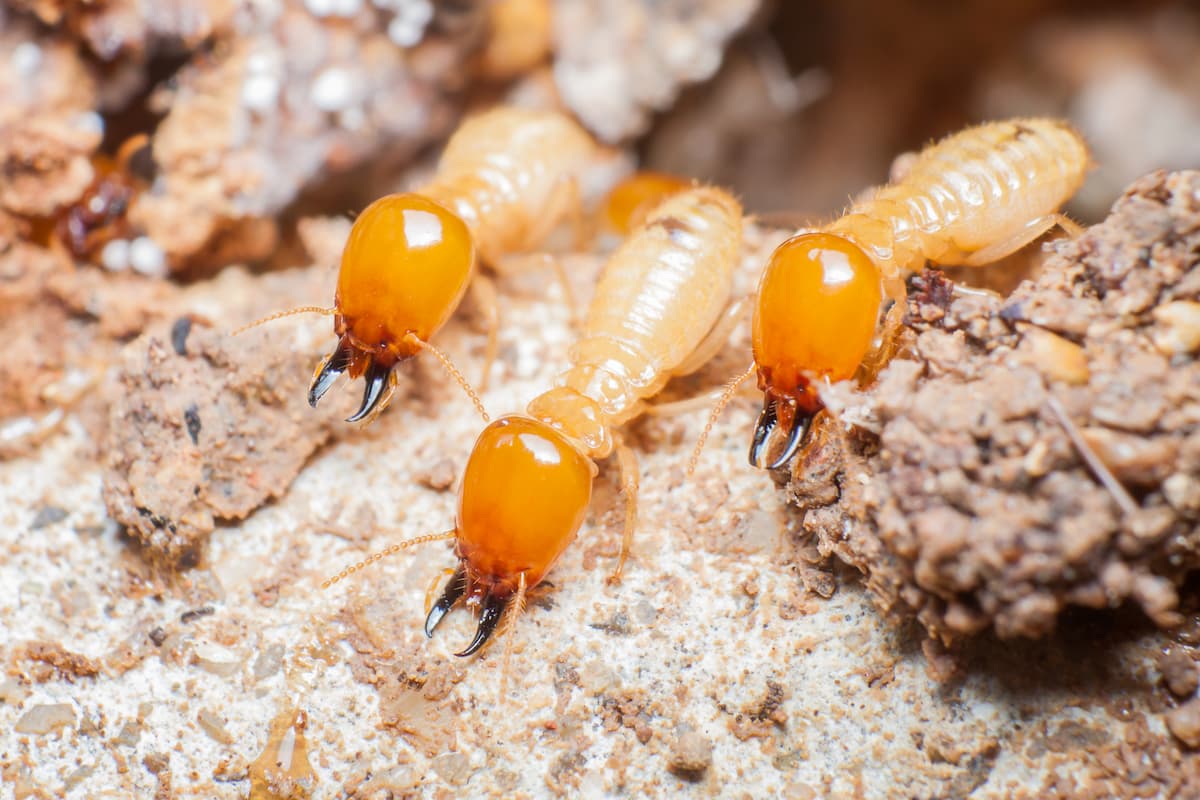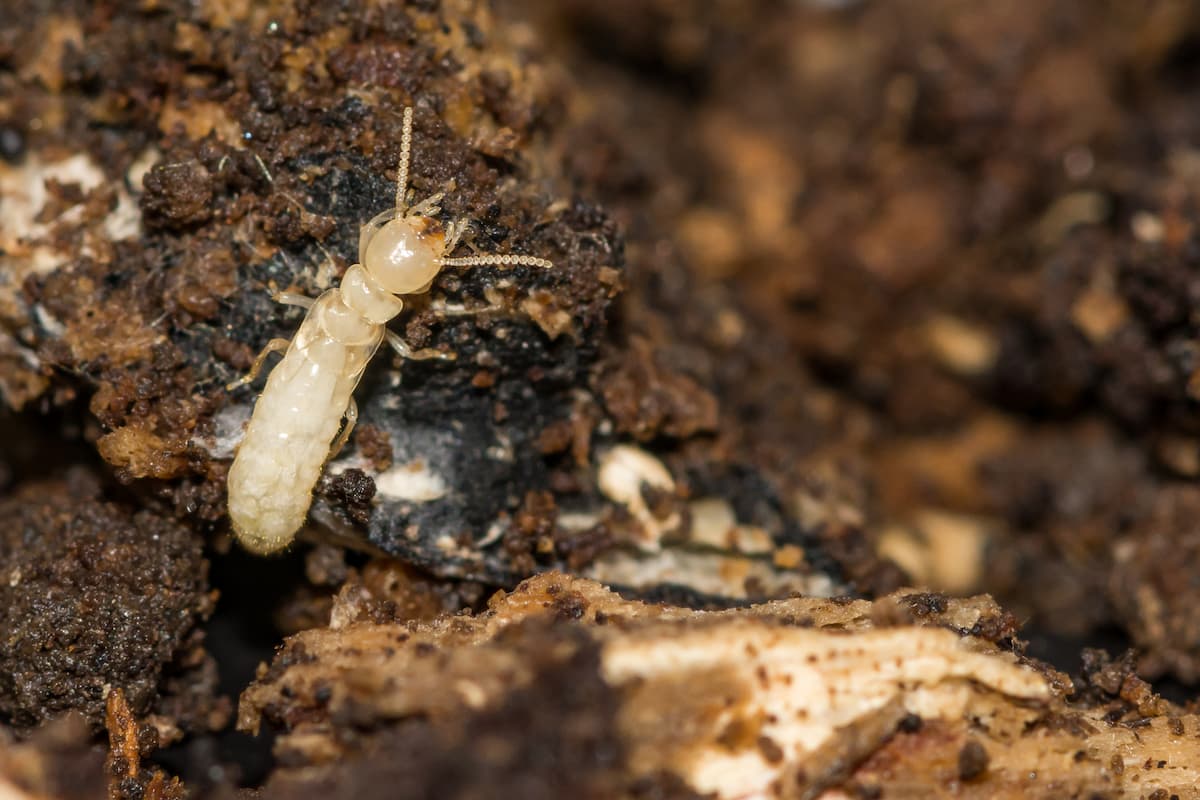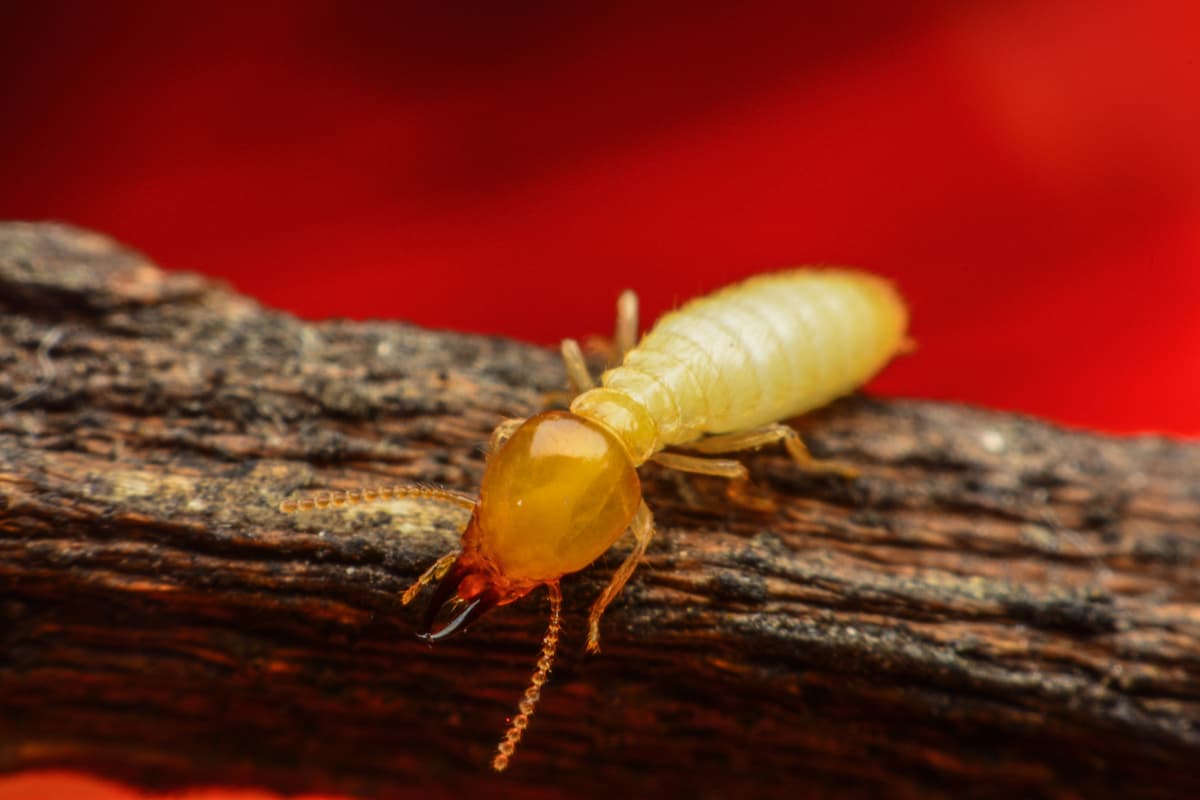Are Termites an Invasive Species?
With the rise in global trade in the last few centuries, invasive species have reached just about every area of the earth.
But what about termites? Are these tiny wood-eating pests invasive?
Whether a termite is invasive depends on its species and where it is. For example, many termites are indigenous to the United States, while others are native to other places. Overall, though, I can say that there are invasive termite species on every continent except Antarctica, meaning invasive termites are just about everywhere.
Invasive Termites in the United States

Some termite species are native to the United States, such as the eastern subterranean termite.
However, other species are non-native and have made their way to the United States, primarily through international trade.
In the US, the most destructive invasive termite is the Formosan termite. Scientists believe the Formosan termite originally came from Taiwan. In fact, “Formosa” is the old Portuguese name for Taiwan.
According to actual data, Formosan termites first left Taiwan and the surrounding area in the 1600s when they made their way to Japan by catching boat rides.
About 200 years later, these termites migrated to Hawaii. However, they didn’t come to the continental US en masse until the 1960s. They probably entered the United States through port cities in South Carolina, Texas, and Louisiana during this time.
Today, they live in all of the states of the southeastern US, including North and South Carolina, Tennessee, Georgia, Florida, Alabama, Mississippi, Louisiana, and Texas.
You can also find Formosan termites in certain parts of California. Formosan termites are a particular nuisance in the United States because their colonies are much larger than native species, allowing them to eat more wood in a shorter amount of time.
Invasive Termites in Australia and Surrounding Islands
Australians have been dealing with termites for a long time.
The continent’s most destructive and widespread termite species are the native Coptotermes termites.
These termites exist all over Australia and cause extensive property damage and even start fires when they short electrical circuit devices.
Yet, even though native termites do the most damage, Australia now has five invasive termite species that wreak havoc across the country.
Most of these species come from southern Asia since Australia maintains close trading ties with many of these countries.
Later, invasive termites started to appear in New Zealand, most likely coming from Australia. Other Pacific islands also deal with invasive termites.
Termites tend to love islands because of the warm and wet climate, so it can be rather hard to eradicate termites once they have invaded one.
Invasive Termites in Europe

In the past, Europe didn’t have many termite species, and those that did live there stayed near the Mediterranean coast. But, by the 19th century, a new pest arrived in Europe: the eastern subterranean termite.
This native US species first appeared in Europe in 1837 in plants at Austria’s Schönbrunn Palace. These plants had initially come from the United States.
By the 1920s, researchers had also discovered these termites along France’s west coast. From there, the insects traveled westward, and you can still find them living and thriving in many parts of France.
Germany, specifically Hamburg, also deals with extensive property damage from these invasive pests.
Eastern subterranean termites continue to spread through Italy too.
Which Invasive Termite is the Most Destructive?
Generally, most experts consider the Formosan termite the most destructive invasive termite.
Native to Taiwan and parts of China, the Formosan termite has since spread to other areas, such as:
- Japan
- South Africa
- The United States, including Hawaii
- Sri Lanka
These termites typically like warm and wet climates, like the environment you’ll find in the southeastern United States.
Many people refer to Formosan termites as “super termites” because they exhibit unique characteristics you won’t find in most other termite species. For example, Formosan termites usually live in much larger colonies than other termites.
While most termite colonies don’t get more extensive than a few hundred thousand members, Formosan colonies can sometimes contain several million individual insects.
And although they don’t eat wood faster than most other termites, their large numbers allow them to consume vast amounts of wood in a short time.
Thus, a sizeable Formosan colony can cause extensive structural damage to a home in less than a year, whereas other termite species typically take several years to destroy a house.
These termites can even chew through the insulation of electrical cables, leading to power outages and short circuits.
Formosan termites can also create new colonies at a rate that many other termite species can’t outdo. You see, only a particular type of termite, called swarmers, can make a brand new colony. And a mature Formosan colony can release up to 70,000 in a single season.
In many places, including the US, these characteristics make Formosans the most destructive termite in the area.
How Can I Identify Formosan Termites?
Formosan termites are creamy white or light brown termites that are generally around 0.5 inches (1 cm) long but sometimes smaller.
The best way to tell these termites apart from other species in the United States is by the shape of the soldier’s heads.
Other soldier termites in the United States have rectangular heads, whereas Formosan soldiers’ heads are smaller at the front near their antennas.
Unfortunately, it can be quite challenging to tell Formosan termites apart from other termite species. Therefore, having a termite professional identify the termite for you is best.
Where do Most Invasive Termite Species Come from?

South Asia is where most of the world’s invasive termite species originated. But, as I said, the Formosan, the most destructive invasive termite species in the world, came from Taiwan.
Overall, seven of the world’s invasive termite species originated in Asia. In second place is South America, which gave the world six invasive termite species.
The United States also exported two invasive termites, including the eastern subterranean termite, which torments Europe.
How Did Invasive Termite Species Travel the World?
For the most part, invasive termite species have traveled to new places due to international trade. Thus, most invasive termites, like the majority of invasive species, first show up near port cities.
For example, the Formosan termite arrived in the United States through southeastern ports.
Yet, it isn’t always big cargo ships that accidentally transport invasive termites. Smaller boats and yachts also sometimes introduce termites to new habitats.
Are There Termites Everywhere in the World?

There are termites on every continent except for Antarctica. And in the United States, they are in every state besides Alaska.
So, no, termites are not everywhere in the world. However, you can find them in most places if the environment isn’t too cold.
In general, you are most likely to see termites in hot and humid climates because that’s what they prefer.
Conclusion
Termites can be an invasive species, but they aren’t always. Whether a termite is invasive depends on the species and where you are.
The most troublesome invasive species in the United States is the Formosan termite, which initially came from Taiwan.
Nowadays, you can find this termite throughout the southeastern US, where it causes extensive damage.
Table of Contents
- Invasive Termites in the United States
- Invasive Termites in Australia and Surrounding Islands
- Invasive Termites in Europe
- Which Invasive Termite is the Most Destructive?
- Where do Most Invasive Termite Species Come from?
- How Did Invasive Termite Species Travel the World?
- Are There Termites Everywhere in the World?
- Conclusion
